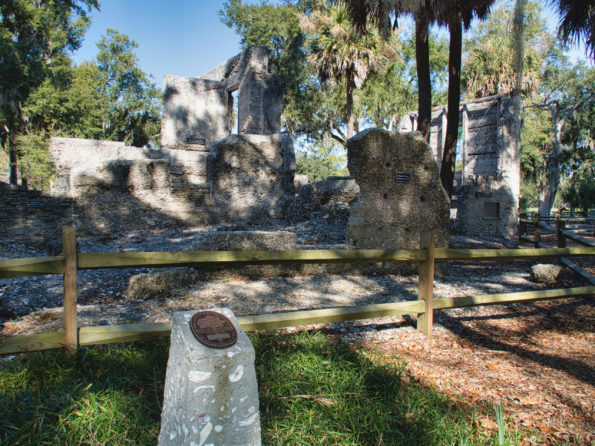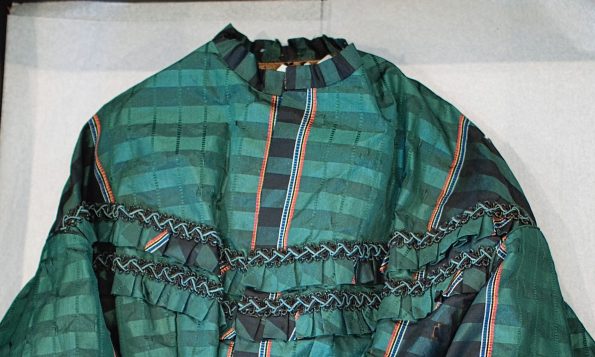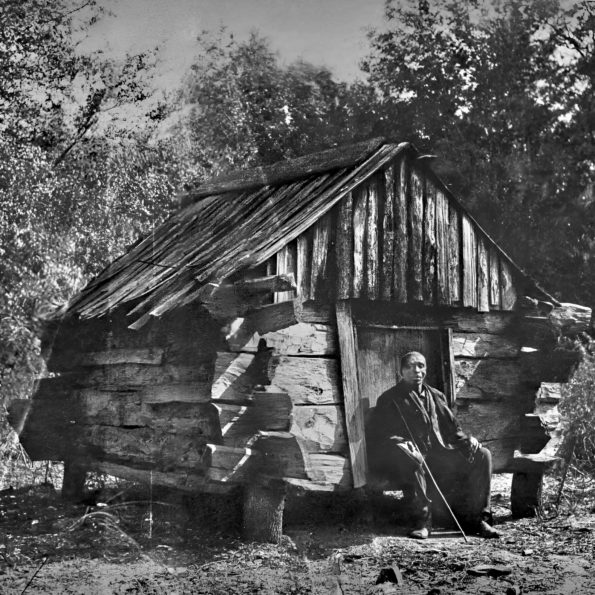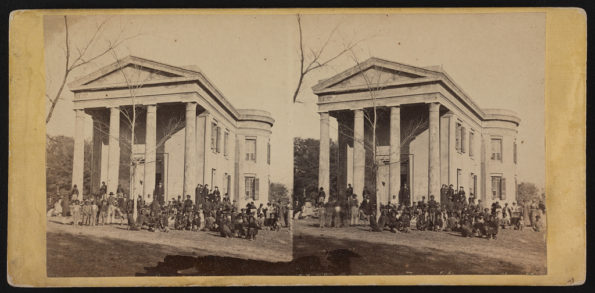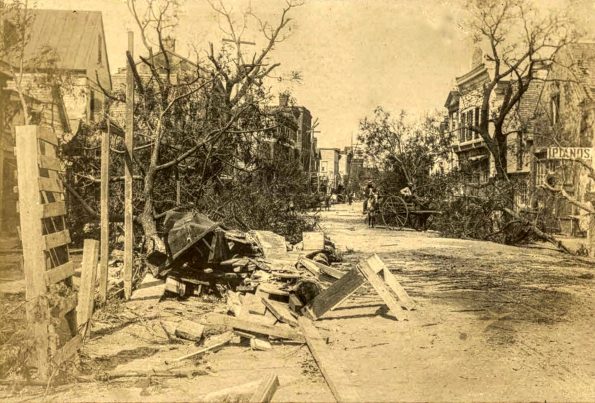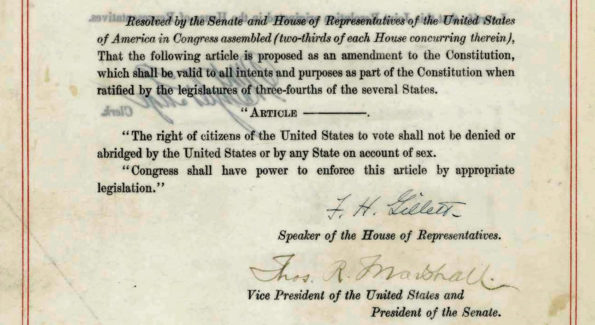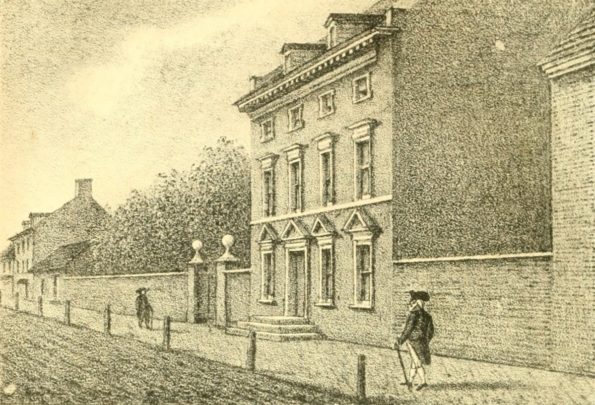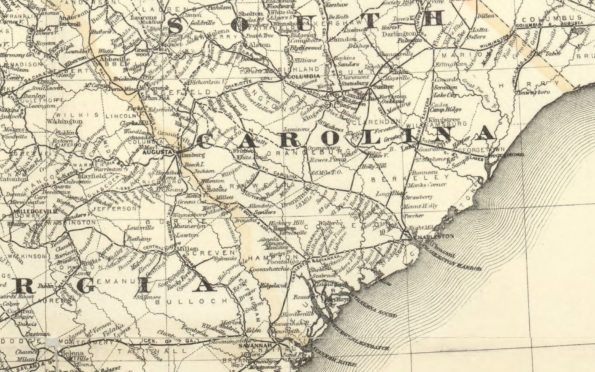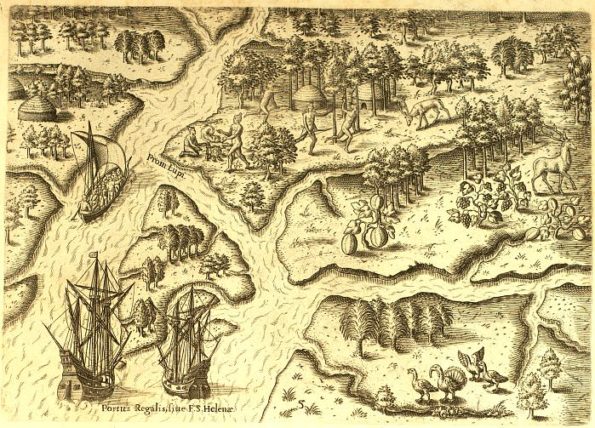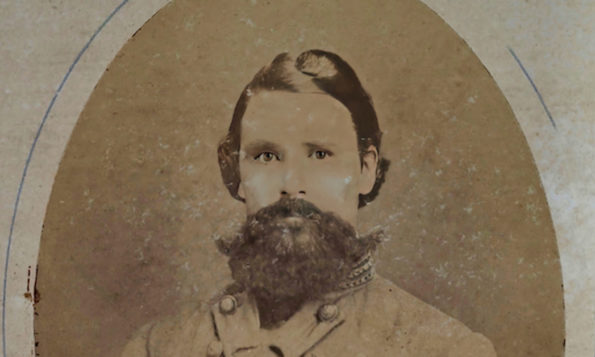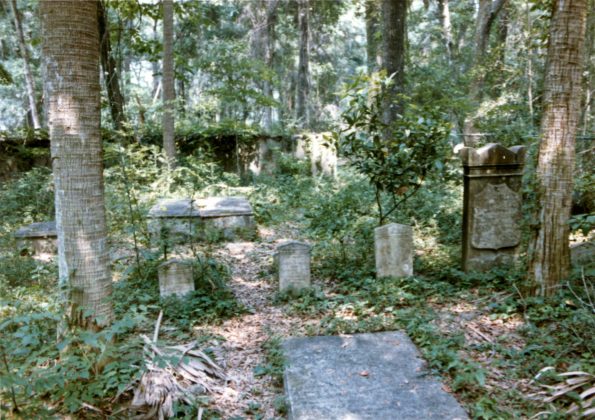For 2020, I’ll Be Writing A Series Of Short Articles About 52 Members Of The Sams Family; 52 Sams In 52 Weeks.
These articles will be announced each week via email to DatawNet, and the articles themselves will be posted on our redesigned website every Tuesday morning. I was inspired by professional genealogist Amy Johnson Crow and her “52 ancestors in 52 weeks” project. She has suggested inspirations for picking an ancestor to write about, and I’ll loosely follow some of these.
Recently, tour requests have begun to pick up. So I thought it would be a good time to introduce you to the winter home of Dr. BB Sams (1787-1855) and his family. Their tripartite house is one of several tabby structures in the Sams Plantation Complex Tabby Ruins, accepted on the National Register of Historic Places on March 4, 2011. In the antebellum period, and the sea islands of Beaufort in particular, nearly all planters had a summer home and winter home. The summer home is where they lived in the hot months to get away from their plantation(s) and the diseases associated with heat, humidity, and bugs. In summer, they went to their homes in Beaufort or St Helenaville. Summer was also the prime time of the year for socializing and for children to be tutored. In winter, the planters lived in their plantation homes. So the ruins you see today on Dataw Island are of Dr. BB Sams winter home and yard.
This week’s theme is HEIRLOOMS. The Dataw Historic Foundation is fortunate because the Sams descendants have entrusted us with several family heirlooms. This week features the story of two other items donated to the Foundation, a green silk taffeta Victorian gown and a shawl circa 1860. Ginny Hall-Apicella and BIll Riski recently presented the history of the dress to our Dataw Island residents.
This photo is of Brutus on Palawana Island, SC, circa early 1900s. The image is from Face of an Island: Leigh Richmond Miner’s Photographs of Saint Helena Island, compilation by…
Virginia B. Bartels summarizes the history of education in South Carolina very well. “Much of the 300-year history of our public schools is a tragic tale of fits and starts, marked at times by inspired leaders, but too often mired by problems of class, race, war, poverty, and geography.”
I believe receiving a good education is a primary reason so many Sams could rebuild their lives after the Civil War’s devastation. However, they received this education because they were lucky enough to be born into a family that could afford to pay for a good education in a time and in a place where this was not common. The sad state of childhood education in Beaufort in the antebellum era was not just about money. You may be surprised to learn that British tradition also played a vital, negative role.
Water in motion is beautiful—most of the time. But once in a while, it grows from a rising tide into a boiling hurricane. Water indeed defines much of the character of our Lowcountry. It flushes and nurtures the marsh. Defines the borders of our island. And pushes us away when a hurricane approaches.Most of you reading this know about the beauty of the waters around Dataw. It’s a contributing reason I live here. The “beast face” of water is fortunately seen less often. This week I’m going to tell you about, by far, the most massive hurricane this area has ever experienced—the hurricane of 1893. And I’m going to tell you a little know story of Ting Sams Colquhoun’s ancestors that met their death in that hurricane.
This article is in honor of our 19th Amendment, which changed our country dramatically.
The Amendment’s journey from Seneca, New York, to our U.S. Constitution was long and torturous. Dataw Island has four people connected to the Women’s Suffrage Movement: Sarah Barnwell Elliott, Kate Gleason, Fanny Sams Bell, and Conway Whittle Sams. Sarah was a women’s suffrage movement leader at the state and national levels. Kate was the great industrialist who purchased Dataw Island in 1927. Fanny was one of the millions of women across the nation who proactively worked for women’s rights. Conway, a lawyer in Virginia, was vehemently against giving women the right to vote!
William Sams fled with his family to the Beaufort area from Charleston in 1783. He left Charleston because of the Confiscation Acts of early 1782. They likely picked Beaufort due to family connections. As our past DHF president John Colgan might say, it was the second time the Sams were on the wrong side of history. But similar to the first time, this move was a blessing in disguise. The following 80 years would bring great wealth to Beaufort, South Carolina, and the Sams. This short article is about how we won our independence from Great Britain, seen through the lens of local South Carolina’s concerns and consequences.
Sometimes taking a long view of history provides an insightful perspective on the lives of others. A few years ago, I compiled a timeline of U.S. Presidents who were in office during the antebellum era of the Sams of South Carolina. I focused on William Sams and two particular sons, Lewis Reeve Sams and Dr. Berners Barnwell Sams, M.D. The timeline starts in 1783, when William Sams, at 42, left Wadmalaw Island and moved his family to Beaufort and Datha Island. It ends with the Great Gun Shoot / Big Skedaddle of 1861. The graphic integrates the lives of William, Elizabeth, Lewis Reeve Sams, and his brother Dr. Berners Barnwell Sams, M.D. — with — the terms of our first 16 presidents
We have often told you how the events of Nov 7, 1861, led to the immediate evacuation of all plantation owners from Beaufort District. And you’ve heard most lost everything as a result. The Federal government, of course, fully intended to shut the door on the old South. A war was going on, and both sides needed to fund their war efforts. For the Federal government, the legal steps started with the Direct Tax Act of August 1861, which levied taxes on all states and was amended in June 1862 to include the rebellious states as well. This led to Federally appointed tax commissioners arriving in Beaufort later that year. Foreclosures on South Carolina homes and land followed. This included all of the Sams real estate in the Beaufort District. However, there is more to the story. Thirty years later, the Federal Government compensated the Sams heirs and others for their confiscated real estate.
Like all of the United States, the Lowcountry was inhabited by indigenous peoples when Bonum Sams II (1663 ~ 1743) and John Barnwell (1771 – 1724) immigrated here in 1681 and 1701, respectively. Long before William Sams (1747 – 1798) bought Datha Island in 1783, the conflicts between Europeans and American Indians had played out here in the Lowcountry. The American Indians were gone from this corner of South Carolina. It may surprise you to know that nineteen American Indian tribes lived in our area at one time. We are reminded of the American Indians by the river/estuary names even today.
Horace Hann Sams (1829-1865) is one of the four Beaufort men I wrote about earlier who died in the Civil War. Today I dig deeper into Major HH Sams life and legacy. It becomes clear from contemporary accounts about him what drove this southern soldier in our American Civil War. Those he left behind were deeply affected by their loss. To paraphrase novelist Mitch Albom, his death ended a life, not a relationship. His older brother Rev. James Julius Sams, carries his sorrow into the memoir he wrote 40 years later.
Several years ago (2006 – 2009), DHF had some preservation work done to the brick wall around the Sams Family Cemetery near the plantation house tabby ruins. We discovered several buried pieces of marble, and the adventure began. This is the story of the final resting place of Sarah (Fripp) Sams (1789 – 1825), the first wife of Lewis Reeve Sams (1784 – 1856).


